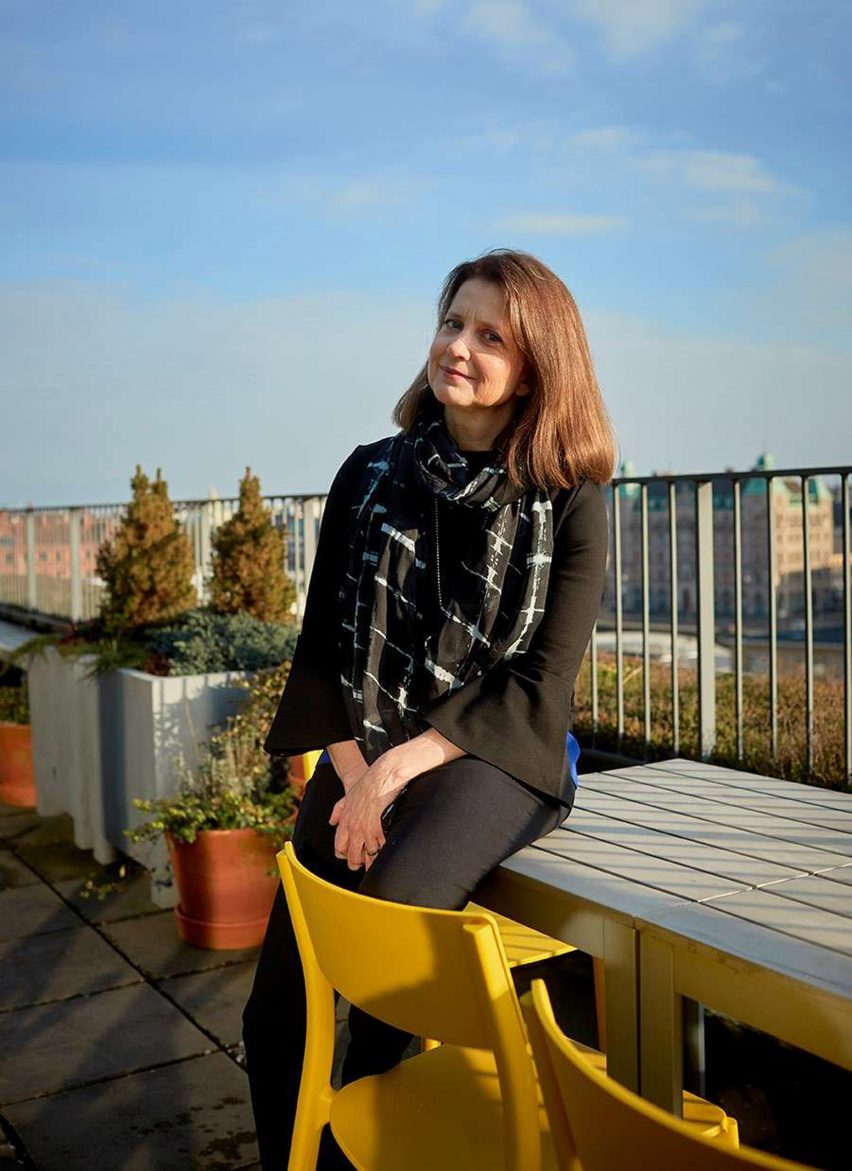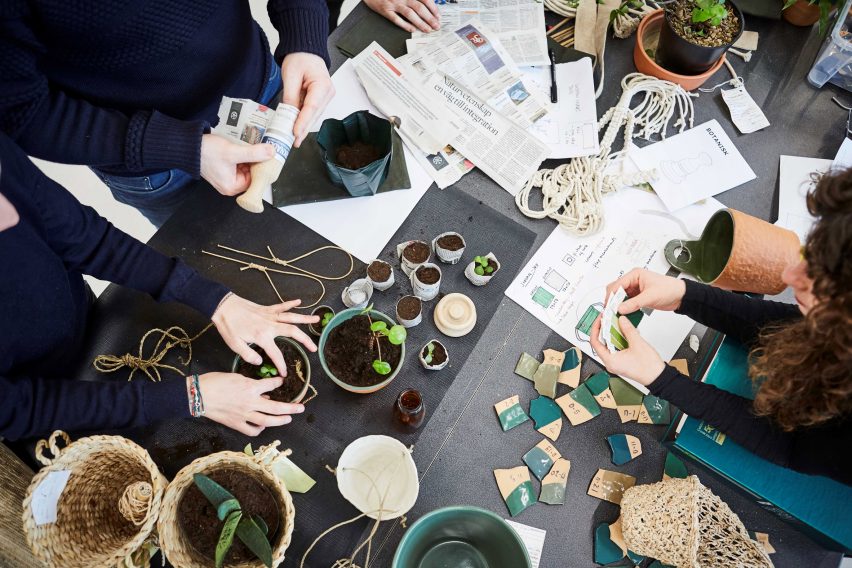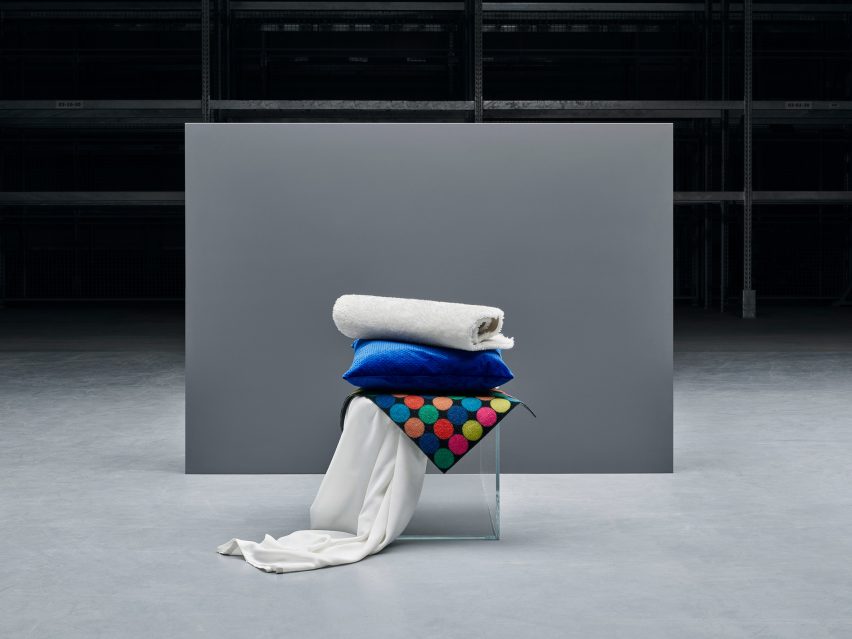Single-use plastic products from the IKEA home furnishing range to be removed globally by Jan 2020
- CT
- Sep 6, 2019
- 6 min read

IKEA has committed to becoming a circular business by 2030, by eliminating waste and reusing resources. A year into the project, sustainability head Lena Pripp-Kovac tells Dezeen how they're getting on.
The Swedish furniture giant announced last year that it plans to make all its products according to circular principles by 2030, meaning that they can be reused, refurbished or recycled. It will use only renewable or recycled materials across its entire range.
Called People and Planet Positive, the strategy was launched in June 2018, with the first report following earlier this year. Lena Pripp-Kovac, who is head of sustainability at IKEA, is the person responsible for making the transformation happen.
"The aim is to remove waste," Pripp-Kovac told Dezeen in an exclusive interview. "It's a big journey but it's also quite exciting because it's possible."
"People need to sleep, people need to eat and people need to play and provide for their families," she continued. "How do we do that without being wasteful?"

One of the world's biggest companies, IKEA last year generated 38.8 billion euros in retail sales at 422 stores in more than 50 countries and online. It accounts for 0.1 per cent of all global greenhouse gas emissions, if you include everything from sourcing materials to customers' use of products in their own homes.
The entire range of around 12,000 IKEA products will need to be reconsidered in line with the strategy. Pripp-Kovac's role covers the product and food range, as well as supply, production and franchising.
A circular business is one that eliminates waste and pollution while restoring natural systems. If the entire global economy could become circular, then human society could thrive without depleting the earth of its resources or destroying ecosystems.
Circular-economy champion Ellen MacArthur, founder of the Ellen MacArthur Foundation, explained the difference between today's linear economy and the circular alternative in a recent interview with Dezeen.
"[Today's] linear economy is a straight line, no matter how efficient you make it," MacArthur explained. "If you make a car with less material, if you make a car using less energy, you're still using stuff. You're still consuming materials."
"Whereas within a circular model, from the outset you design in a way whereby that product comes back into the system: the components are recovered, the materials are recovered."
IKEA's move comes at a time when big business is waking up to the idea of circularity, with the eco-innovation programme leader at Adidas telling Dezeen that the circular economy is "the solution" and The Ellen MacArthur Foundation aiming to persuade 20 million designers to commit to circularity.
"It is turning from the linear to the circular, of course, but the major purpose is to have a completely new take on providing more for more people, but with less resources," she said.
"It means that you can't just reduce the materials only, you need to reuse them, you need to start to recycle them. And you need to phase out very unsustainable processes."
IKEA set out its goals – which are in line with the UN Sustainable Development Goals for 2030 – and how it plans to achieve them, in a sustainability report published last year.
"We're looking at a change of our total business," said Pripp-Kovac.
"It requires that you prepare the enablers to become a circular business," she continued. "It's not just at the end of the process that you become circular, you really have to look, number one, at what are the materials you're using."

The company will review its milestones year-0n-year over the coming 11 years, with the latest report due to be published early next year.
"We want to do it with facts. You want to know what it all actually means," said Pripp-Kovac. "Does the new material prolong the life of a product? Does it change our consumption behaviour?"
Currently, 60 per cent of IKEA's collections are made from renewable materials and 10 per cent contain – but are not solely made from – recycled materials.
Making the changes will require "big movements". IKEA has committed to reducing its carbon footprint, whilst growing the business and without purchasing carbon offsetting certificates.
To achieve this, the company will need to reduce greenhouse gas emissions by at least 15 per cent across the whole IKEA value chain, in absolute terms, by 2030. This is the equivalent of cutting the climate footprint of each product by 70 per cent.
"I think the most important part is to really look at this as a change. It's not just increasing recycled materials, or putting a bin outside the store. That's just a starting point, but what happens after that?" said Pripp-Kovac.
"For the consumer it's a different way of consuming in the future. It's a huge shift. We're all changing and I think society is changing," she continued.
"If you want to create something new, you have to be optimistic about the possibilities to change, but the challenges are very daunting."
As the materials that make up IKEA products are the company's largest source of CO2 emissions at 36.4 per cent, Pripp-Kovac sees sourcing as a key area to tackle.
"The whole change of the materials is huge for us; making sure that we are able to use recycled materials in the best way and also being able to source differently," she explained.
"There are definitely things that we will need to work together with others on, such as the amount of recycled materials that are even available today," she continued.
"Our suppliers are the most innovative ones in finding new solutions."

At the start of the project, the company mapped all its global waste materials, which they see as their future resources. It also made a "roadmap" for each material that it uses, to identify areas of improvement.
For example, wood is the primary raw material in much IKEA furniture, so it has been planting fast-growing, renewable poplar plantations in Slovakia since 2016 as a more sustainable source of timber. It is developing a more sustainable glue, which is an essential component of the particle board in many IKEA products.
To meet fire regulations, much of the company's wooden furniture must be coated with a fire retardant, that until now has been fossil-based. With an innovation partner, IKEA has developed a biodegradable, cellulose-based alternative that is recyclable.
One of the top priorities in this first year, according to Pripp-Kovac, has been the "big shift" of moving to recycled polyester.
"Some of the bigger moves during this year have been in polyester, as we are aiming by 2020 to have all our textile products made from recycled polyester, which is quite a big volume," she said.
Surprisingly, the transportation of products contributes a relatively small amount of their carbon footprint at just 3.9 per cent.
"Yes, transport is important, but we also know that it is a few per cent of our total footprint," said Pripp-Kovac. "So if we do everything good in transport, which of course is on our agenda, still we will never reach our climate goals."
How customers travel to the stores, which are usually outside the town centre, and the energy required for home deliveries, make up a much larger proportion at 15.5 per cent.
Some targets will be implemented well before 2030, such as the elimination of single-use plastic products from the IKEA home furnishing range globally by January next year.

Prolonging the life of products and materials is something that designers at IKEA are now putting at the forefront of the design process.
"Sometimes when we talk about making sure that we prolong the life of products we talk very much about the end of it," said Pripp-Kovac.
"I think the idea of circular really makes the point of saying that it is already in the design phase, when you start to think that you have to incorporate the whole life-cycle into what you do and how its owned and what's going to happen with it," she continued.
"It's also important you put it in the context of an economy, you can't be a circular economy as a big company by yourself. You need to have a network and fit into the society in order to have a circular economy."
According to Pripp-Kovac, changing people's behaviours is as important as designing with circularity in mind, if the move from a linear to a circular economy is to be successful.
"It's a huge shift. We're all changing and I think society is changing," said Pripp-Kovac.
"If you want to create something new, you have to be optimistic about the possibilities to change, but the challenges are very daunting."
Report Dezeen
Comments